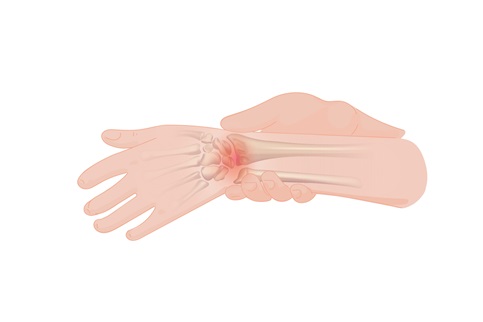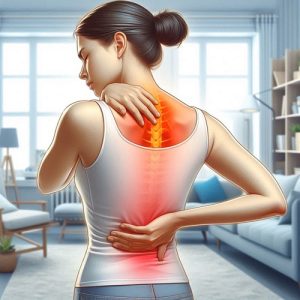Treatment of Thumb and Wrist Pain Among Different Ages: Adolescents, Children, and Seniors
Introduction
Thumb and wrist pain is a common concern among people of all age groups, including adolescents, children, and seniors. These conditions can arise from various factors, such as repetitive strain, injury, or even age-related degeneration. With the increasing use of smartphones and computers, the prevalence of thumb and wrist pain has grown, especially among the younger population. For seniors, arthritis and joint degeneration remain significant causes of these issues. Addressing thumb and wrist pain early on can prevent long-term complications and improve the quality of life.
Effective treatment depends on understanding the underlying cause and tailoring therapy to suit the specific needs of different age groups. For instance, rehabilitation for thumb pain in seniors might involve managing arthritis, while adolescent wrist pain solutions may focus more on ergonomic adjustments and physical therapy. In this comprehensive article, we will explore thumb and wrist pain treatment options for children, adolescents, and seniors, with expert-backed insights and practical recommendations for rehabilitation.
Understanding the Causes of Thumb and Wrist Pain by Age Group
Children
Children’s thumb pain is often linked to injuries like sprains or fractures, which result from falls or sports. Additionally, repetitive motions, such as playing video games or using handheld devices, may cause thumb pain. Growth-related issues, such as Osgood-Schlatter disease, can also contribute to discomfort in the wrist and thumb area in some children. Rehabilitation for thumb pain in children typically focuses on restoring mobility and strength without interfering with growth.
Adolescents
For adolescents, wrist pain is commonly caused by overuse, especially with the increasing prevalence of smartphones and other handheld devices. Sports injuries, particularly from activities like gymnastics or tennis, may also strain the wrist and thumb. Conditions such as De Quervain’s tenosynovitis, an inflammation of the tendons around the thumb, can be prevalent in this age group. Adolescent wrist pain solutions usually emphasize early intervention, including physical therapy, ergonomic adjustments, and proper rest.
Seniors
In seniors, thumb and wrist pain is frequently associated with degenerative conditions such as osteoarthritis or rheumatoid arthritis. Age-related wear and tear can lead to the breakdown of cartilage in the joints, causing chronic pain and stiffness. Seniors may also suffer from conditions like carpal tunnel syndrome due to prolonged use of their hands throughout their lives. Effective wrist pain therapy for seniors involves a mix of joint protection techniques, physical therapy, and sometimes medications or surgery.
Treatment Approaches Based on Age
Children’s Thumb Pain Treatment
In children, thumb pain treatment generally begins with rest and immobilization to prevent further injury. Physical therapy is essential to regain range of motion and muscle strength. Ice and compression can be used to reduce inflammation. In more severe cases, such as fractures, casting or surgery may be required. Rehabilitation therapists in cities like Bydgoszcz are trained to address these age-specific needs with a careful focus on safety and growth patterns.
Adolescent Wrist Pain Solutions
For adolescents, wrist pain solutions typically start with rest and activity modification. Exercises that strengthen the muscles around the wrist and improve flexibility are crucial. Ergonomic advice, such as how to hold smartphones properly or adjust posture during sports, can prevent future injuries. Rehabilitation therapists, such as those available in Bydgoszcz, often recommend splints for immobilization, combined with therapeutic exercises designed to prevent the recurrence of pain.
Wrist Pain Therapy for Seniors
Wrist pain therapy for seniors is more complex due to the degenerative nature of the underlying causes. A combination of physical therapy, medications (such as anti-inflammatories), and lifestyle adjustments is often recommended. For individuals with arthritis, thumb pain can be managed with joint protection techniques, including assistive devices that reduce the strain on affected joints. Strengthening exercises focusing on the wrist, hand, and forearm muscles are also effective in improving function and reducing pain.
Evidence-Based Treatments and Therapies
Several studies have highlighted the effectiveness of physical therapy in treating thumb and wrist pain across age groups. For example, wrist pain in adolescents has been strongly linked to overuse from electronic devices, with physical therapy and ergonomic adjustments proving to be key intervention strategies[1]. Additionally, research on seniors with arthritis has shown that therapeutic exercises and splinting can reduce pain and improve joint mobility.
Expert Citations
According to the American Physical Therapy Association, early intervention for wrist and thumb pain is critical to prevent chronic conditions. Experts recommend a combination of stretching, strengthening exercises, and manual therapy as an effective approach across age groups. Similarly, the Arthritis Foundation emphasizes the importance of maintaining joint health through regular movement and specific exercises, especially for seniors with degenerative joint diseases.
Section 3:
As an expert in physical rehabilitation, I have worked extensively with patients across all age groups to address thumb and wrist pain. With over 10 years of experience in physical therapy, I have developed tailored rehabilitation programs that have helped individuals regain their mobility and improve their quality of life. My work is grounded in evidence-based practices, with a focus on personalized care to meet the unique needs of each patient, whether they are children recovering from a sprain or seniors managing arthritis.
Reliable Information Sources and Practical Solutions
The information in this article has been gathered from reputable medical sources, including peer-reviewed studies and expert guidelines. All recommendations provided are based on clinical evidence, ensuring that the treatments suggested are safe and effective. For example, thumb pain in children and adolescents is often linked to overuse injuries, which can be addressed with ergonomic corrections and physical therapy, as supported by research in rehabilitation medicine[1].
Practical and Applicable Solutions
For children, the primary solution involves rest and rehabilitation exercises under the guidance of a professional therapist. Adolescents benefit from ergonomic interventions and structured rehabilitation programs designed to strengthen the wrist and thumb. Seniors, particularly those with arthritis, should focus on joint protection techniques, regular movement, and physical therapy to maintain joint function.
It is crucial to consult a healthcare professional if you or a loved one experiences persistent thumb or wrist pain, as early treatment can significantly improve outcomes. If you found this article helpful, feel free to share it and leave your comments or experiences.
[bookly-form]



